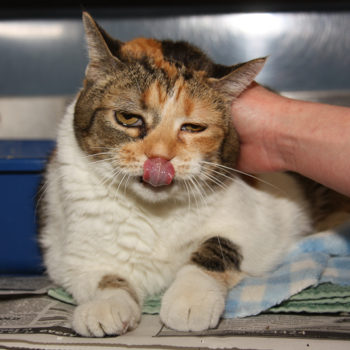Saving your shelter money starts from the moment the cat steps inside the shelter, says Monica Frenden, Director of Feline Lifesaving at American Pets Alive! Spend a couple of extra minutes giving them a quality intake exam and then move them to adoptions immediately (or wherever they are going). A quality intake exam includes weight check, FVRCP, microchip and a Wood’s Lamp exam.
Frenden touches on this subject and more in her recorded presentation of Cat Medical Care on a Shoestring Budget from the 2019 American Pets Alive! Conference.
Don’t automatically quarantine cats when they come in and see if they come down with something, Frenden says. “The longer you keep a cat in-house, the sicker she is going to get. Sometimes the best thing we can do for a cat is get them out from under our care and alleviate that stress.” Don’t wait for the cats to get to 100% she says. Let people adopt a cat with a URI and send them home with the proper medicine.
She also recommends having protocols in place for common ailments like diarrhea and upper respiratory infections, so that staff can handle these and your veterinarian can spend their time in surgery or seeing other serious cases.
Dr. Alexis Bardzinski, the medical director at Austin Pets Alive! recommends being flexible with drug choices. If you don’t have access to the expensive medicines, make do with what you have. APA also accepts donations of any kind, including medicine.
Bardzinski also treats what she sees. If someone says a cat has been exhibiting x,y and z, but she doesn’t see z, then she just treats for x and y. No expensive tests unless they are critical to treatment she says.
You’ll also want to stick around for the story about Princess Sam, the most expensive cat in APA! history that they haven’t spent a cent on.
If you enjoyed this session, join us in Austin, TX, for The American Pets Alive! Conference 2020: Redefine Animal Sheltering: Disrupt the Past, Build the Future from February 28th – March 1st.

